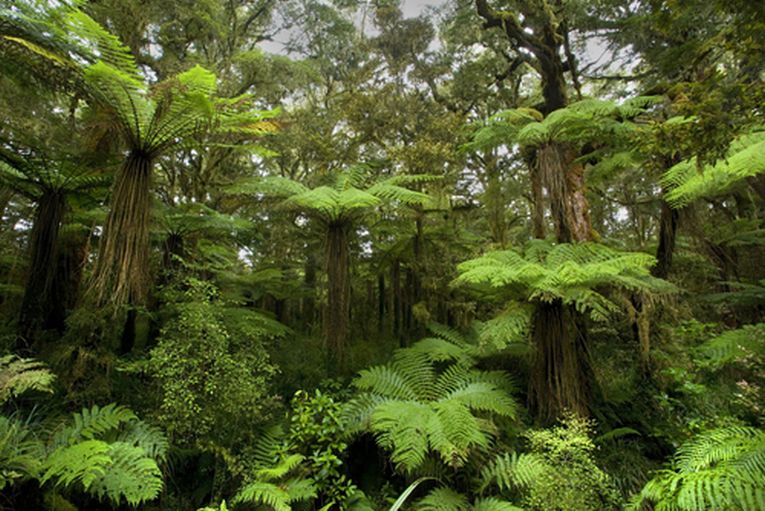"Development that meets the needs of the present without compromising the ability of future generations to meet their own needs."
This is how the World Commission of Environment and Development defines - sustainable development.
The definition is traced all the way back to 1987, but still holds true to this day.
The Status Quo of Sustainable Development
Over the years, environmentalists have made it clear that our planet is in need of serious rehabilitation. The media has made us well aware of critical disasters caused by global warming, such as the melting of ice caps, the deterioration of forestlands, the ongoing dilemma of scarcity, and the worsening intensity of pollution.
Because of this, sustainability trends and issues have moved up the economic and political schema, influencing numerous undertakings in all levels of society. Various non-profit organizations have been consistently dedicating themselves to saving our planet and educating people on how they could do the same. And all of us, at one point in our lives, have been told to make a number of lifestyle changes in order to be of help to the ongoing struggle to preserve our planet’s dwindling resources.
Positive response has been building up slowly but surely, with recent reports showing that more and more people are making substantial efforts to “go green.” Everyone, in some way or another, is being part of the shift towards green sustainability. All aspects are given attention: the business sector, the energy consumption crisis, and the very core of human lifestyle and behavior.
The Possible Face of Sustainability Run Out

This is a green house, but very traditional, being built in the Norwegian grass house tradition; Norway house image Credit: © Shutterstock
Dedication to green sustainability is evident in the growth of relevant markets, with the construction sector showing one of the most notable improvements. In 2012 alone, the green home design market amounted to 20% of all newly built residences in the United States. Researchers at McGraw Hill even predict that by 2016, green homes will increase to 38%. This growth in the green building industry goes to show that energy efficient home designs are becoming a trend in sustainable living. Building in key cities are done under entirely new standards of sustainable development, and - condo building sustainability. Condo building sustainability is becoming a popular concept among construction companies worldwide.
The solar industry also reflected massive growth of 41% in 2013, with more than 440,000 operational solar systems by the end of the year. Innovative strategies in the solar industry are becoming a key component in efforts to attain energy sustainability, and access to solar power is rapidly growing more and more in demand. The consumer goods sector is also showing allegiance to the global sustainability movement. Business giants such as Walmart and Kellogg, who proposed to bring 8 million hectares of farmland to counter the effects of greenhouse gas emissions; and McDonalds, which launched wide-ranging sustainability efforts to be more environment-friendly in their operations, have been setting the trend for next-generation business thinking.
What The Future Sustainability Setting Looks Like
Even with the combined efforts of all these sectors, along with individual human efforts to lead a more eco-friendly lifestyle, environmental analysts are still faced with the following questions: Are current sustainability efforts enough to compensate for humankind’s past mistakes? Is it true that the amount of degeneration is too massive for us to counteract, given the current amount of sustainability efforts done globally? Will the environment eventually hit its mark? Is there a possibility of sustainability run-out?
Environmental stress has often been perceived as the result of the unmet demands of scarce resources and the pollution caused by the high living standards of more affluent societies. But deeper scrutiny will reveal that poor people are often left with no choice but to overuse resources in order to meet their daily needs, while wealthy communities often attain prosperity through practices that are globally damaging in the long term. And so we are caught of in the dilemma that arise both from the lack of development and from the inadvertent consequences of economic growth.
A hundred or so years down the road, will the negative effects of poverty and development be so massive that we won't be able to turn things around? And so in the end, it all comes down to making balanced efforts that will target poverty and development at a deeper scale. But how do we catch up?
Stepping Up To Greater Standards
It has been said numerous times in the research field that there is no one solution to the looming environmental crisis, and that to successfully advance in solving this dilemma, we must cultivate new methods of thinking, create an improved moral criteria, and adapt new patterns of behavior.
According to Forum for the Future, our - global resource consumption every year is 30% more than what our planet can replenish. Europe thrives on the resources that can be produced by three planets, while Americans have a five-planet way of living. This cannot be the case for long, because it threatens not only the resources they depend on, but also the resources of less fortunate nations. To stop this from happening, we must change our patterns of consumption for the better.
To be successful in this endeavor, people must realize that sustainability is not only a matter of saving the planet—but it is also saving us from ourselves, and the things we can do to further jeopardize our chances of creating a more liveable world for our children.
"Providing good lives for the world's people is certainly possible - but it will not be possible using the resource-intensive development and growth models we have pursued in the past," says GFN Director of Research and Standards, Dr Juan Carlos Morales. This means finding more holistic approaches and models of progress that lessen demand on ecological resources. This also signifies preserving the resources we have left, instead of using them irresponsibly for short-term prosperity.















